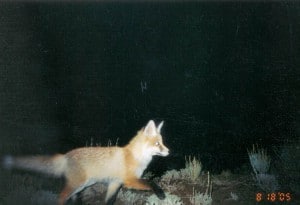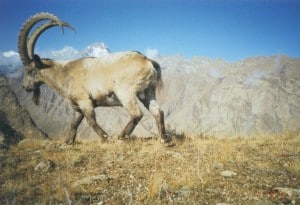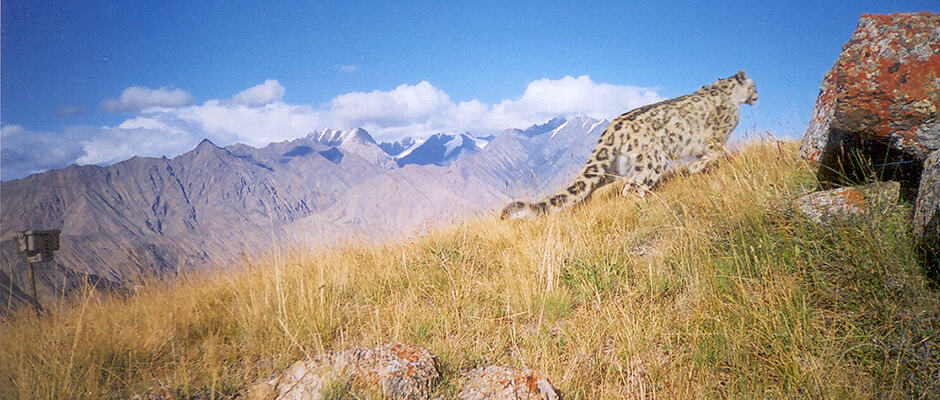Share this article
Snow leopards may eat more big animals than previously thought
Snow leopards eat a lot more big ungulates than researchers may think, according to a new study.
Snow leopards are notoriously elusive — one member of The Wildlife Society has spent 10 years studying the cats in Asia but has never actually seen one in the wild. Instead researchers have to track them through camera traps or other potential clues that the leopards leave behind — namely their droppings.
But this can present some problems, according to a new study published in the Wildlife Society Bulletin. Researchers out in the field rely on visual cues such as scat size and shape and nearby paw marks to identify snow leopard scat. But much of it doesn’t even belong to leopards, according to genetic analysis on 199 scat samples collected in Tajikistan and 36 from Kyrgyzstan.

Red fox in Kyrgyzstan. ©Kyle McCarthy
“Basically what we found was that only about 36 percent of our collected scats were snow leopards,” said Sarah Weiskopf, a master’s student at the University of Delaware and lead author of the study. “We actually collected more red fox scat than snow leopards.”
This can be a problem for scientists, because the scat of different animals indicates different diets. When biologists analyze scat, they usually identify the diet of the creature in question by identifying undigested hair. Scat samples collected seemed to show a mixture of small and large mammals.
“One of the reasons that snow leopards are declining is a lack of prey species,” Weiskopf said. “If we’re not correct in assessing what they’re actually eating, we won’t be able to design conservation strategies that are beneficial to them.”
But Weiskopf and her coauthors found that once you determine the scat that actually belonged to snow leopards, a lot less small mammals turn up in their diets. The leopards’ primary food sources are ungulates like ibex and argali sheep (Ovis ammon).

Ibex in Kyrgyzstan. ©Kyle McCarthy
“That can be a problem for conservation plans,” said Weiskopf, especially when trying to determine how to bolster potential snow leopard prey.
She said that a potential strategy for snow leopard conservation involves offering trophy hunting of species like ibex. Since people will pay a lot to hunt the ibex, it would bring about a larger motivation to conserve them. But knowing how many ibex snow leopards need to subsist on would have an effect on the numbers hunters are allowed to take.
Genetic analysis on scat clears up some of the misconceptions on leopard diets, she says, and makes up for some of the shortcomings in using visual clues in identification.
“In the future we should make sure to do genetic scat confirmation,” Weiskopf said.
Header Image: A snow leopard in Kyrgyzstan. ©Kyle McCarthy








